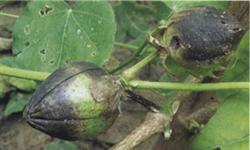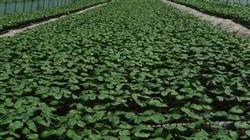Prevention and control of cotton boll rot

First, the light is poor, suitable for pathogen infection, disease is often serious, cotton rotten bolls are also more serious. Cotton boll rot is caused by the infection of many kinds of pathogens. In rainy years in summer and autumn, cotton field humidity is high and cotton plant closure is heavy. Ventilation accounts for 28.3% of boll disease. Rainfall days and rainfall in late August are the key factors affecting the occurrence of cotton boll blight in our province. During this period, there are 3-5 rainy days, and the disease will occur seriously. Extensive cotton field management, pruning or chemical control measures are not timely, plant growth, etc., are conducive to disease. 2. Cotton boll rot control method 1. Reasonable fertilization: increase organic fertilizer and phosphorus and potassium fertilizer, apply appropriate nitrogen fertilizer, prevent cotton plants from flourishing, reduce cotton canopy, and improve ventilation and light transmission. 2. Reasonable pruning: For cotton fields with too narrow row spacing and too early sealing, in order to reduce excessive field shading and improve light conditions and ventilation conditions in the middle and lower parts, the edge center should be removed as soon as possible, which can reduce the loss of buds and rotten bolls. 3. Chemical control: Chemical control is an important measure for comprehensive control of cotton boll rot, and targeted fungicide spraying should be carried out. 8-9 In January, when the weather forecast has several consecutive days of rainy weather, spray protection should be carried out in time. Spraying should be concentrated in the middle and lower parts of cotton plants. Commonly used agents are carbendazim 1000 times solution, 80% Penke WP diluted 500-600 times solution, 70% Chlorothalonil WP diluted 500 times solution, etc.
- Prev

The Seedling Seedling and transplanting technique of Cotton conjoined Seedling
Conjoined seedling transplanting is a brand-new cotton cultivation model. Each cultivation technique of this model is closely linked and inseparable. In the process of implementation, it must be closely linked in order to give full play to its systematic effect. The four major links are as follows: (1) light seedling and sports seedling transplanting.
- Next

How to fertilize cotton at flowering and boll stage
Friends of cotton farmers should earnestly strengthen the management of cotton fields after rain, prevent premature senility, prevent rotten bolls, prevent diseases and insect pests, and promote the normal growth of cotton bolls. Focus on the following measures: first, early drainage and lodging in August and September is the cotton boll opening period, in view of this year's Rain Water more climatic characteristics, for cotton fields with stagnant water, rain.
Related
- The first cup of black tea in spring, the flavor and history of tea gardens in Kenya, Africa
- The computer can not only choose potatoes, but also grow tea rice. AI will grow winter oolong tea champion.
- It is not only the inflated tea bitten by insects, but also engraved with the four seasons tea in Beipu.
- The Oriental Beauty Tea Festival in Zhuxian County takes the stage at the weekend to experience the plus-size feast of oil tea.
- & quot; Oriental Beauty Tea & Exploration of Emei in Hsinchu, the hometown of quot;
- The new variety of strawberry "Tainong 1" dessert is the first choice with mellow aroma. Crimson gorgeous
- History of Tea in Taiwan: from Wild Inner Mountain to Export Tea Garden
- Two types of Taiwan Oriental Beauty Black Tea won the British three-Star Award for Childhood Tea Xiang Zhang Jiaqi changed from pilot to champion tea maker.
- Banana species and varieties: the planting history of Taiwan Xianren banana and dwarf banana is long, is banana disease resistant?
- Coffee planting Technology: Qianjie Coffee from Seedling to harvesting

